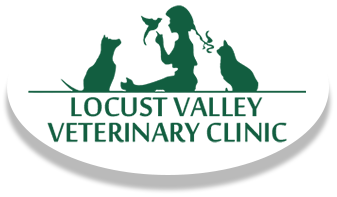Minimally Invasive Surgery
Minimally invasive surgery (MIS) refers to the use of specialized endoscopic instrumentation and cameras to perform surgical procedures that previously required large incisions to gain access to the appropriate tissues. Common examples of minimally invasive procedures performed in people include laparoscopic gall bladder removal and appendectomy.
A wide variety of minimally invasive surgeries can be routinely performed in veterinary patients including, but not limited to:
- Arthroscopy (Evaluation and treatment of diseases of the joints)
- Cystoscopy and Urethroscopy (Surgery for the bladder and urethra)
- Laparoscopy (Surgery within the abdomen)
- Spays (Ovariectomy)
- Prophylactic gastropexy
- Liver biopsies
- Otoscopy (Evaluation and treatment of diseases of the ear)
- Rhinoscopy (Evaluation and treatment of diseases within the nose)
- Thoracoscopy (Surgery within the chest cavity)
- Thoracic cavity exploration and biopsy
- Pericardectomy
MIS is also a very useful tool for the initial staging and diagnosis of many different cancers. The rapid post-surgical recovery time means treatment can be started sooner, affording pets the greatest chance for survival.
Studies show minimally invasive procedures are less painful, result in less bleeding, and provide quicker return to function and activity level when compared to traditional surgical procedures.
Our Surgery Service has extensive experience performing minimally invasive surgical procedures and is available to discuss your pet’s eligibility for such procedures. If you would like to make an appointment, please call 631-923-2530 or ask your primary veterinarian for a referral.
View our video of Urethroscopy and Cystoscopy on a dog below.
MIS Case Examples
Prophylactic gastropexy
Large and giant breed dogs with deep chests are predisposed to developing gastric dilation/torsion (GDV), otherwise known as “bloat.” This is a life threatening emergency that requires emergency surgery. Prophylactic gastropexy, a surgical procedure designed to prevent GDV, can be performed using minimally invasive techniques, often at the same time as a spay or neuter. If you wish to find out more information about GDV or prophylactic gastropexy using MIS, ask your veterinarian or contact us at 631-923-2530 to schedule an appointment with our surgery department.
Laparoscopic liver biopsy
The liver is a vital organ, necessary for filtering toxins from the bloodstream and producing proteins and clotting factors. Diseases of the liver are often initially diagnosed with bloodwork performed by your veterinarian or occasionally more advanced imaging such as abdominal ultrasound. However, liver value elevations on bloodwork or visible changes on an ultrasound are often inadequate in providing a specific diagnosis and liver biopsies are necessary to determine appropriate treatment recommendations. Using laparoscopy (placing a camera within the abdomen through tiny incisions), the liver, and other abdominal organs, can be directly visualized and biopsies of any abnormal tissue can be obtained. Performing liver biopsies with laparoscopy allows for a definitive diagnosis, while minimizing pain and recovery time for your pet. If your veterinarian has suggested a liver biopsy and you would like to discuss the possibility of having this performed within minimally invasive techniques, please contact our surgery department at 631-923-2530 or ask your veterinarian for a referral.
Laparoscopic spays
Spaying female dogs is a procedure performed by most veterinary hospitals, and the benefits of this procedure for dogs and cats are well established including minimizing the risk of mammary cancers, avoiding unwanted pregnancies, and removing the risk of a potentially life threatening infection of the uterus called pyometra. Traditionally in the United States, a spay surgery is performed through an vertical incision made along the middle of the abdomen and includes removal of both the ovaries and uterus (ovariohysterectomy). Using smaller incisions and specialized equipment, removal of the ovaries (ovariectomy) can now be performed laparoscopically, affording the same protective health benefits as an open spay, but with reduced post-operative recovery time and pain. If you would like to consider having your pet’s spay performed using minimally invasive techniques, ask your veterinarian for more information or contact our surgery department at 631-923-2530 to schedule an appointment.
Urethral biopsy
Just like humans, older animals are at an increased risk of developing cancer. Cancer of the bladder or urethra can cause your pet to show signs of blood in their urine, recurrent urinary tract infections or straining to urinate. Diagnosing cancer within the bladder or urethra can be difficult, and conventional surgical or needle aspirate techniques can post risk for spread of disease. Cystoscopy (placing a small camera into the urethra and advancing it into the bladder) can be used to visualize the inside of the urethra and bladder. Biopsies of any abnormal tissue can be obtained through the scope to allow for a definitive diagnosis of your pet’s disease. This provides the most accurate information regarding potential treatment options and prognosis. If you believe your pet would benefit from cystoscopy ask your veterinarian for a referral or schedule an appointment with our surgery department at 631-923-2530 to discuss whether this procedure would be appropriate.
Board-Certified Surgery Services are available at Gold Coast Center for Veterinary Care by appointment. Please call 631-923-2530 for more information or to book an appointment.







